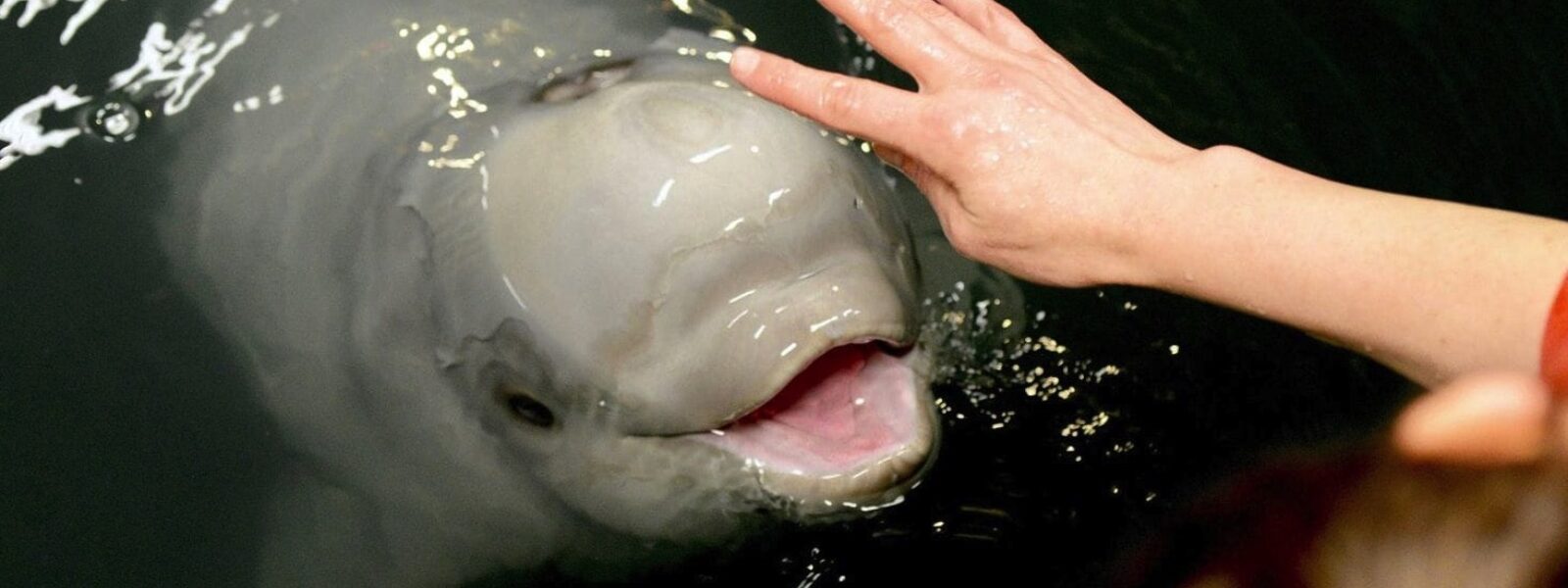

A team of scientists made up mostly of aquarium staff are gathered in Alaska in attempts to keep a baby beluga calf alive after he was found stranded and separated from his mother shortly after birth.
Sadly, if he survives, he may face a lifetime in captivity.
The male calf was found in the Western Cook Inlet on September 30th. He was then taken to the Alaska Sealife Center, where staff from SeaWorld San Diego (including a mammal “curator”), the Mystic Aquarium, the Vancouver Aquarium, and the Shedd Aquarium are attempting to save his life.
Unfortunately, several articles are already hinting that he will never be able to be returned to the sea – meaning that, if he survives, he will spend the rest of his life in captivity. How this will be determined is something that the International Marine Mammal Project hopes to have input on, so that it isn’t only the captivity industry making this critical decision.
While this is, on one hand, a “heartwarming” effort by concerned people to save the life of a little beluga, one has to also take the economic and political context into consideration. All the aquariums involved are under fire from increasing legal and public pressure against keeping cetaceans in captivity, and all understand that this beluga represents valuable genetic diversity that can perpetuate their already captive populations of belugas for generations to come - especially given that US and Canadian aquariums are having a hard time getting government agencies permission and permits to capture or import cetaceans. Plus, he would make a great circus-style performer to display in one of their shows.
Each of these facilities would likely love to profit off of this beluga’s life. The Georgia Aquarium, for example, attempted to import 18 wild-caught belugas from Russia, representing the Shedd Aquarium and SeaWorld, but their permit was denied in 2015. The Aquarium sued the government for making this decision, but the government agency prevailed in federal court.
SeaWorld San Diego can no longer breed orcas due to the California Orca Protection Act, but they are actively continuing the breeding belugas and dolphins – and the fact that their assistant curator of mammals is on the ground in Alaska is very telling.
The little beluga is also now on public display. However, if the intention is to return him to the wild, as it should be - particularly given that he comes from a highly endangered population of belugas in the Cook Inlet - then further exposing him to human beings is not a wise decision. The fact that the Alaska Sealife Center decided to do this ahead of the assessment as to his candidacy for release shows additional poor judgement (and perhaps the influence of all the captivity entertainment staff currently present).
If he continues to gain weight and show signs of health, as reported, then this beluga should be placed within a seaside sanctuary in his native waters, close to his family, and efforts be made for his reintroduction to the wild.
The International Marine Mammal Project is urging the US National Marine Fisheries Service to include expert opinion from those scientists who are concerned about the adverse effects of captivity on cetaceans, as they make their decision of whether the beluga can be retired to a seaside sanctuary and eventually returned to his home pod.
Life in a concrete tank is the antithesis to a natural, fulfilled living situation for any cetacean. While the humans involved in this rescue might argue that it’s impossible to return him to the wild, perhaps believing that their feelings of affection for him will help make his life in concrete tanks bearable, at the end of the day their motivation is profit. And that will not feel too good for this baby beluga.
Photo credit Alaska Sealife Center, sourced from this article.